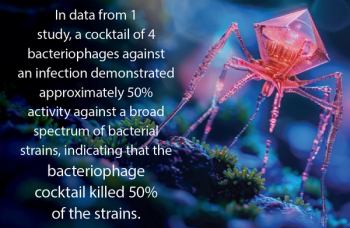
Revolutionary UV-C Device Offers Hope in the Fight Against Central Line-associated Bloodstream Infections (CLABSIs)
A recent study’s results demonstrate that PuraCath Medical Inc.'s breakthrough UV-C device disinfects needleless connectors, potentially reducing CLABSI risks in hospital settings.
Central line-associated bloodstream infections (CLABSIs) pose a significant threat to patient safety. Around
A recent study, “Disinfection of Needleless Connectors for Catheters in One Second Using a Hand-Held UV Device,” published in the American Journal of Infection Control, explains that “inadequate disinfection of needleless connectors (NCs) of a [peripherally inserted central catheter] PICC or [central venous catheter] CVC can lead to
Historically, NCs have been disinfected using 70% isopropanol, chlorhexidine, or both, but they only clean external surfaces. Active scrubbing for 5 to 15 seconds is needed. Caps presaturated with disinfectant have been developed, but they do not disinfect intraluminal surfaces. Contamination of the NC intraluminal surface can cause CLABSIs and are prone to poor adherence; active scrubbing for 5 to 15 seconds is needed.
To address this challenge, PuraCath Medical Inc, has developed the Firefly UV Disinfection System, offering a novel approach to NC disinfection. The Firefly device's use of UV-transmissive cyclic-oleic copolymers allows for the disinfection of NCs' internal surfaces, addressing a crucial area of concern often overlooked by conventional disinfection methods. The handheld UV LED device is powered by a rechargeable lithium-ion battery.
The benchtop study, a strategy to reduce CLABSIs “showed that UV-C disinfection of UV-transmissive NCs using the Firefly device achieved over 4-log reduction in CFUs on the NC's external and internal surfaces,” according to the study’s authors. “The disinfection required 1 second of UV irradiation, in contrast to a 15-second alcohol scrub of nonalcohol-impregnated caps.”
The study explains a particular incentive: “In April 2009, the Centers for Medicare & Medicaid Services (CMS) stopped reimbursement for treatment of these [CLABSIs], except a suspension in 2020-2023 due to the COVID-19 pandemic. Between 2020 and 2021, CLABSI increased [by] 7% in US acute care hospitals, the largest increase observed in ICUs (10%).
In 2020, 30,100 reported CLABSIs occurred in ICUs and wards of US acute care facilities.” These numbers explain the financial incentive for hospitals and other health care facilities to push for reducing CLABSIs. The emotional and physical toll on the patients is incalculable.
Unlike traditional methods, the Firefly system utilizes UV-C light to disinfect both external and internal surfaces of NCs, effectively eliminating microbial contamination and reducing the risk of CLABSIs. The authors wrote, “A motivation to develop alcohol-containing caps was to improve [adherence] and minimize the opportunity for contaminant contact.”
The investigators evaluated NC disinfection with the Firefly system. They tested 22 samples with 5 relevant microbes to ensure 90% confidence and reliability using just 1 second of UV light exposure. CFU reduction was calculated by comparing pre- and post-UV-C exposure CFU counts.
With its potential to revolutionize NC disinfection practices, the Firefly UV Disinfection System offers hope in the battle against CLABSIs, providing a safer and more effective solution for health care facilities worldwide.
The study can be found
Newsletter
Stay prepared and protected with Infection Control Today's newsletter, delivering essential updates, best practices, and expert insights for infection preventionists.






